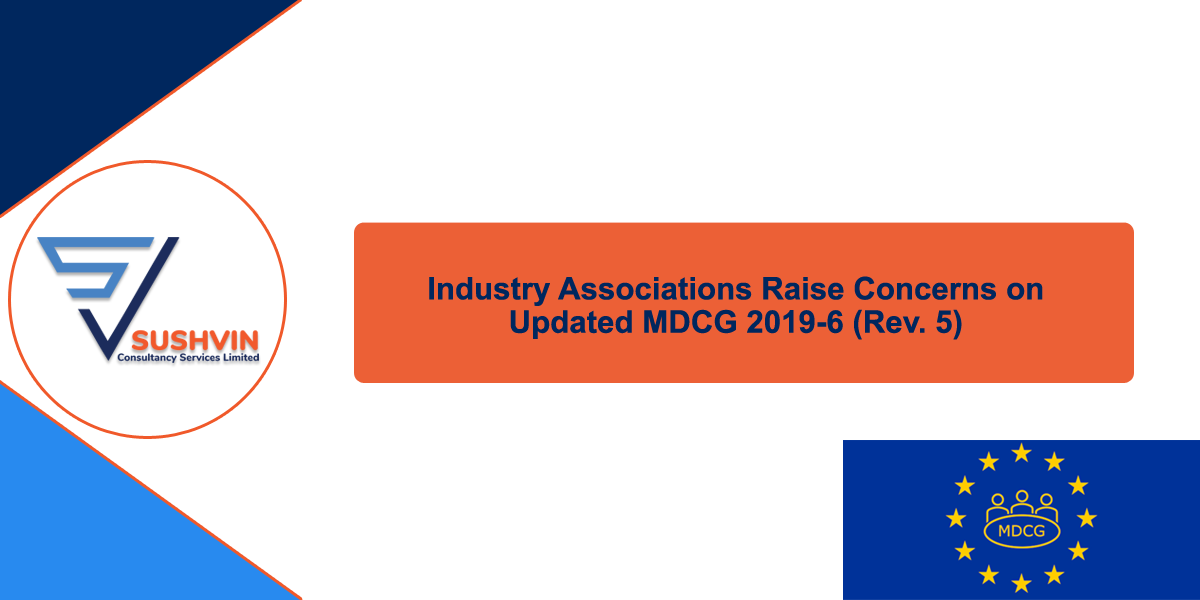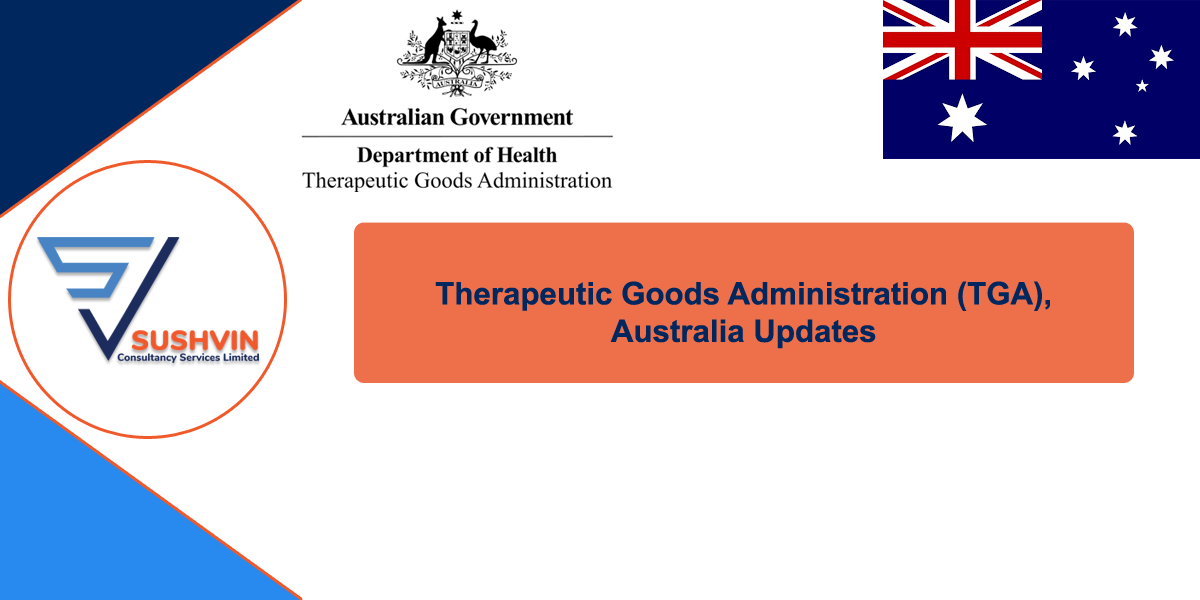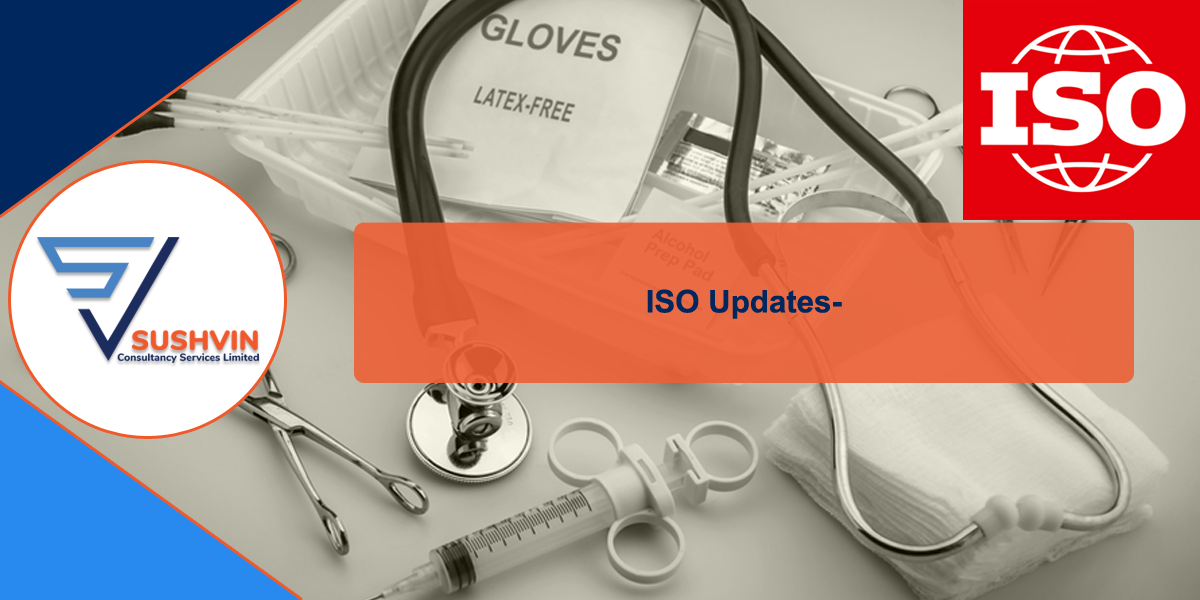UK Update- CE-Marked Devices: Extended Acceptance in Great Britain Until 2030

Important Update for Medical Device Manufacturers and Healthcare Providers
The UK Medicines and Healthcare products Regulatory Agency (MHRA) has issued new
guidance on expired CE certificates for medical devices.
Here’s what you need to know:
CE Marked Devices: CE-marked devices with valid certificates from EU-recognized Notified Bodies can continue to be placed on the Great Britain market until June 30, 2030, under specific conditions.
Expired CE Certificates: Devices with expired CE certificates will no longer be accepted in the UK market unless they transition to the UKCA (UK Conformity Assessed) marking.
Northern Ireland: Under the Northern Ireland Protocol, CE-marked devices compliant with EU regulations will still be accepted in Northern Ireland.
Action Steps:
The MHRA’s priority is to ensure patient safety and maintain access to essential medical devices during this transition.
For more details, visit the MHRA website or reach out for guidance on:
Medical Device Guidance
IVD Guidance
European Updates

IMDRF: Enhancing Global Collaboration in Post-Market Surveillance
Post Market Surveillance National Competent Authority Report Exchange Criteria and Report Form", authored by the National Competent Authority Report Working Group, is a critical step forward in enhancing global collaboration for medical device regulation. The IMDRF’s latest document introduces standardized criteria and report forms to facilitate efficient postmarket surveillance (PMS) information sharing among national competent authorities.
Key highlights include:
This framework marks a significant step toward improving the safety and effectiveness of medical devices worldwide.
📖 Dive into the report and be part of the conversation
European Medical Technology Industry Calls for EU to Join MDSAP
The European medical technology industry, represented by MedTech Europe and COCIR, has called for the European Union (EU) to join the Medical Device Single Audit Program (MDSAP) as a full member. This initiative aims to harmonize regulatory requirements for medical devices across multiple countries, including the United States, Canada, Australia, Japan, and Brazil.
Key Benefits of EU Membership in MDSAP:
By joining MDSAP, the EU would reinforce its leadership in global regulatory harmonization and convergence initiatives for medical technologies. This move would ultimately contribute to faster patient access to innovative medical technologies in Europe.
For more details, you can read the full joint reflection paper here.
EU Designates Reference Laboratories for High-Risk In Vitro Diagnostic Medical Devices (IVDs)
The European Commission has taken a significant step towards ensuring the safety and performance of high-risk in vitro diagnostic medical devices (IVDs) by designating EU reference laboratories (EURLs) under Article 100 of Regulation (EU) 2017/746. These EURLs play a crucial role in conformity assessment, particularly for class D devices.
Key Responsibilities of EURLs:
In July 2022, the European Commission launched a call for the designation of EURLs in eight categories of class D devices. Following the completion of the selection procedure, five EURLs were designated, taking up their tasks on October 1, 2024. A second call for applications is now open to address the remaining categories.
For more details, you can read the full article here.
Exciting Update: New Qualification & Validation Guidelines for Pharma in 2025!
The pharmaceutical industry is advancing with the introduction of the Good Practice Guide for Qualification and Validation. This comprehensive resource serves as a vital tool for ensuring robust qualification processes and emphasizes the significance of a strong Customer-Supplier Partnership in achieving compliance and operational excellence.
Key Highlights Include:
These groundbreaking guidelines will undoubtedly shape the industry's trajectory, providing the framework to adapt and thrive in an ever-evolving landscape. Let’s embrace these cutting-edge guidelines to stay ahead in the ever-evolving industry landscape and build a stronger, more resilient pharma sector!
To read more go toEmbracing Digitalisation in Medical Device Technical Documentation: Insights from MedTech Europe
The medical device industry is undergoing a transformative shift, and digitalisation is at the heart of this change. On March 18, 2025, MedTech Europe released a pivotal Position Paper on the Digitalisation of Technical Documentation, highlighting the critical role of digital tools in streamlining regulatory compliance and improving efficiency.
Why Digitalisation Matters:
Key Takeaways :
📄 Read the full position paper here:
TÜV SÜD Whitepaper Summary: Ensuring Safety of Implantable Medical Devices in MR Environments
The TÜV SÜD whitepaper provides a comprehensive overview of the challenges and solutions related to the safety of implantable medical devices in a magnetic resonance (MR) environment. It highlights the potential risks posed by MRI technology, such as heating, displacement, and malfunction of implants. The document outlines the regulatory requirements and consensus standards that manufacturers must adhere to, ensuring that devices are tested rigorously for MR safety.
The Challenge:
As MRI technology advances, ensuring the safety of implantable medical devices in magnetic resonance (MR) environments becomes increasingly critical. Patients with implants face potential risks including:
Key Considerations for Manufacturers:
Why This Matters:
With over 10 million MR scans performed annually in the US alone*:
Access the Full Whitepaper
A Vision for Patient-Centric Governance in Medical Technologies
MedTech Europe, AESGP, COCIR, EAAR, EUROM, and FIDE have come together to publish a joint industry discussion paper, presenting a transformative vision for a more efficient and patient-focused governance structure for medical technologies in Europe.
As a legal manufacturer, organisations will have to register their devices prior to be placed on the UK market.
Key Highlights from the Paper:
This collaborative effort underscores the need for a unified governance structure that prioritizes accountability, transparency, and stakeholder engagement. By addressing current challenges, the industry aims to build a resilient and forward-looking regulatory framework.
To read more go to
Cybersecurity in Healthcare: A Priority for Medical Devices
In today's interconnected world, the secure exchange of patient data through medical devices is vital for high-quality healthcare. However, cyber threats pose significant risks, not just to individual patients but to global healthcare standards.
The IEC 81001-5-1 standard offers a structured approach to addressing these challenges, ensuring security throughout the product lifecycle of health software and IT systems. As it gains Harmonized Standard status under the EU MDR, it becomes a critical tool for manufacturers aiming to ensure compliance and safeguard patient safety.
Explore the whitepaper on cybersecurity, medical devices, and IEC 81001-5-1:
Special thanks to MEP Pr. Laurent Castillo for raising this important topic, and to Health Commissioner Olivér Várhelyi for addressing it during the European Parliament session. This revision promises to bring greater clarity and flexibility to the MDR framework while continuing to prioritize patient safety and innovation in MedTech. It’s a crucial milestone for the industry to stay engaged and proactive as we move forward.
Source
MedTech Europe EU HTA Regulation and EU Harmonised Assessment for Digital Medical Devices (including AI)
MedTech Europe has released a reflection paper by a community of Digital Health and Artificial Intelligence experts, highlighting the need for comprehensive and adaptive evaluation frameworks for digital medical devices (DMDs). Despite the promise of DMDs to transform healthcare, their adoption in clinical practice remains limited, and their regulatory environment is still developing.
Key Points:
For more details, you can read the full reflection paper here.
Mastering MDR Compliance: Training for Manufacturers
The NB Team continues to pave the way for smoother MDR compliance! Their latest training on technical documentation provides invaluable insights into best practices and notified body interpretations, offering manufacturers the tools they need for successful submissions.
Whether you're a large organization or an SME, understanding the intricacies of MDR technical documentation is critical to ensuring safety, quality, and compliance. Kudos to the NB Team for empowering manufacturers to adapt and thrive in this evolving regulatory landscape!
For more details visit
Belgium Updates

New FAMHP Guideline for Clinical Investigations under MDR in Belgium!
The Belgian Federal Agency for Medicines and Health Products (FAMHP) has published a new guideline outlining the submission processes for clinical investigations under the Medical Devices Regulation (MDR). This document provides crucial national guidance to help stakeholders navigate the MDR framework effectively.
What You Need to Know:
Why This Matters:
For manufacturers, sponsors, and researchers, understanding these processes is essential to avoid delays, ensure compliance, and successfully conduct clinical investigations in Belgium.
This is a significant step toward enhancing patient safety and fostering innovation in medical devices.
Next Steps:
Review the guideline to understand the updated submission requirements.
Prepare your documentation and processes to align with the new framework.
📄 Access the full guideline
France Updates

Strengthening Vigilance in Healthcare Facilities
🗓️ Effective March 2025 🇫🇷 Published by ANSM (France's National Agency for the Safety of Medicines and Health Products)
ANSM has unveiled essential new guidance to enhance vigilance in healthcare facilities. This comprehensive resource addresses:
Key highlights of the guidance include:
This guidance is designed for vigilance correspondents, healthcare professionals, and regulatory teams, emphasizing patient safety and compliance under EU Regulations 2017/745 & 2017/746.
A must-read for anyone involved in post-market surveillance or clinical risk management.
To read more visit
US Updates

The Future of Healthcare: FDA’s Evolving Framework for AI in Medical Products
Artificial Intelligence (AI) is revolutionizing healthcare, offering unprecedented opportunities to improve diagnostics, personalize treatments, and enhance patient outcomes. But with great innovation comes great responsibility—ensuring these technologies are safe, effective, and equitable.
The U.S. Food and Drug Administration (FDA) is leading the charge in creating a robust regulatory framework for AI in medical products. Their approach focuses on:
Key highlights of the guidance include:
As the FDA refines its guidelines (with updates expected through 2024-2025), it’s clear that collaboration between regulators, industry leaders, healthcare providers, and patients will be key to shaping the future of AI in medicine.
What does this mean for the healthcare industry?
To read more go to

Regulatory Update: NSAI Temporarily Suspends IVDR Certifications
Ireland’s National Standards Authority of Ireland (NSAI) has temporarily suspended the certification of certain in-vitro medical devices (IVDs) as part of a government-led overhaul. This affects key products, including blood tests, and has led to a halt in new IVDR certifications since December.
What This Means for Manufacturers:
At Sushvin, we help businesses stay ahead of regulatory challenges by:
If your IVDR certification process has been impacted, let's connect and explore the best way forward. Proactive planning is key to staying on track!
Reach out to SUSHVIN today to discuss your options.

Industry Associations Raise Concerns on Updated MDCG 2019-6 (Rev. 5)
Major industry associations—MedTech Europe, AESGP, Medtech & Pharma Platform Association, and COCIR—have issued a joint position paper highlighting concerns about the recently updated MDCG 2019-6 (Rev. 5) guidance.
While the revision provides a more structured framework for dialogue, it fails to address a critical gap: the lack of clinical strategy discussions in the pre-submission phase between manufacturers and Notified Bodies.
Why This Matters:
Misalignment on clinical evidence expectations poses significant risks to:
Key Recommendations:
The Industry’s Message:
Regulatory clarity is not just a need—it’s a necessity. Policymakers must act now to ensure a thriving MedTech ecosystem in Europe.
Read the full
MDCG 2019-6 Rev. 5 guidance.

Proposed Changes to IVD Medical Device Classifications and Definitions in Australia –
What You Need to Know?
The Therapeutic Goods Administration (TGA) in Australia has released a consultation document outlining proposed changes to the classification and definitions of In Vitro Diagnostic (IVD) medical devices. These changes aim to align Australia’s regulatory framework more closely with global standards, ensuring patient safety and fostering innovation in the IVD sector
Key Proposed Changes:
Why This Matters:
At Sushvin Consultancy, we are closely monitoring these developments and are here to help you navigate the evolving regulatory landscape. Let’s work together to ensure these changes drive innovation while safeguarding public health.
Read the full consultation document
The TGA Australia User Guide (Version 3.0, March 2025) provides updated guidance for completing applications to import, supply, or export medical devices that do not meet the Essential Principles (EPs). This version introduces a modernized, online application process through the TGA Business Services (TBS) portal, replacing the previous paper-based system
Key Highlights:
This update aims to simplify the application process, improve transparency, and ensure compliance with safety and performance standards.
Access the full User Guide
Advancing Medical Device Safety: TGA Australia & UDI Implementation
The Therapeutic Goods Administration (TGA) is revolutionizing medical device management in Australia by enhancing the Unique Device Identification (UDI) system. This critical initiative, supported by the AusUDID database, ensures better tracking, tracing, and notification processes for devices, ultimately prioritizing patient safety.
Recent system updates highlight structural improvements and streamlined data submissions, paving the way for easier compliance and improved performance. It's a leap forward for healthcare professionals, patients, and manufacturers alike. Discover more about theTGA's UDI efforts
TGA Australia Update: Mastering Recalls, Product Alerts, and Corrections (PRAC)
Attention all sponsors of therapeutic goods in Australia! The Therapeutic Goods Administration (TGA) has updated its procedures for recalls, product alerts, and product corrections (PRAC) as of March 5, 2025. These guidelines are essential for ensuring compliance and safeguarding public health.
What’s New?
The updated PRAC framework provides clear guidance on:
Why This Matters:
Market actions like recalls and alerts are critical for maintaining trust and ensuring the safety of therapeutic goods. The updated procedures reflect TGA’s commitment to streamlining processes and enhancing transparency in the industry.
Key Takeaways for Sponsors:
For more details, visit the TGA website

Health Canada: Share Your Views on Draft Guidance for Medical Device Licences
Health Canada has opened a consultation on the draft guidance for managing applications for medical device licences. This consultation, which began on February 20, 2025, will remain open for input until April 21, 2025.
Stakeholders, including medical device manufacturers and regulatory affairs representatives, are invited to provide feedback on the draft guidance document. Key areas for discussion include the overall clarity and content of the guidance, as well as the revamped reconsideration process.
Share your views: Consultation on the draft guidance on managing applications for medical device licences - Canada.ca
What This Means for Manufacturers:

ANVISA News: New Submission Manual for Clinical Development Dossier
ANVISA has published a new submission manual, including the Drug Clinical Development Dossier (DDCM) and the Specific Clinical Trial Dossier (DEEC). This manual, described in Chapter III of RDC 945/2024, provides guidance and complementary explanations for submitting these dossiers. The aim is to standardize the format of submissions in terms of
the order and content of the documents, ultimately speeding up the evaluation process.
For more details, you can read the full manual here.

ISO Update: March 2025
The latest ISO updates for March 2025 are here, and they bring exciting developments for the medical device industry! Here’s a quick snapshot of what’s in progress under TC 194 -Biological and Clinical Evaluation of Medical Devices:
ISO/CD 21762:
This new standard focuses on risk management for medical devices utilizing non-viable human materials. As the use of human-derived materials in medical devices grows, this standard will play a critical role in ensuring safety and efficacy.
ISO/CD TS 25364-1, Part 2, Part 3:
This technical specification addresses analytical chemistry matters associated with ISO 10993-18, which is crucial for the chemical characterization of medical devices. With three parts in development, this document promises to provide comprehensive guidance for the industry.
Period Covered: February 1, 2025 – March 1, 2025
Why This Matters:
These standards are essential for ensuring the safety, quality, and performance of medical devices. They also reflect the evolving landscape of medical technology and the need for robust risk management and analytical framework.
Stay tuned for more updates as these standards progress through the DIS and FDIS stages. For detailed insights, check out the official ISO monthly updates at SUSHVIN.
ISO 15223-1:2021 Amendment: Key Updates for Medical Device Labeling
The amendment to ISO 15223-1:2021, now ISO 15223-1:2021/Amd 1:2025, introduces significant changes aimed at improving clarity and consistency in medical device labeling.
Highlights of the Amendment:
While these changes aim to simplify and standardize labeling practices, the amendment is not yet harmonized for the EU market, and the transition period is pending final definition by the European Commission.
As emphasized by industry experts Lena Cordie-Bancroft and Jana Russo (Moravcova), understanding the reasoning behind these changes is crucial before drawing conclusions. This is an opportunity for the industry to align with evolving global requirements and drive progress.
Sushvin Provides UK Responsible Person (UK RP) Services
Are you a legal medical device/IVD manufacturer located outside the UK and would like to market your product in the UK, then you will require a UK responsible person who will act on behalf of the manufacturer to ensure all the responsibilities detailed within the updated UK MDR 2002 regulations are met.
As a legal manufacturer, organisations will have to register their devices prior to be placed on the UK market.
If you need UK Responsible Person (UK RP) services, please contact SUSHVIN for more information.
If you are planning to market your product in the EU and if you require PRRC (Person Responsible for Regulatory Compliance), we have a team of experienced regulatory professionals who can help you assist with PRRC services and get you regulatory compliant as per MDR 2017/745 and IVDR 2017/746
If you need PRRC Services, please contact SUSHVIN for more information.
